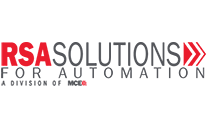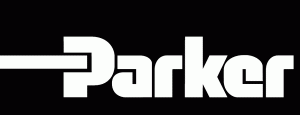 Originally published on blog.parker.com by Electromechanical Team, 9/1/2015
Originally published on blog.parker.com by Electromechanical Team, 9/1/2015
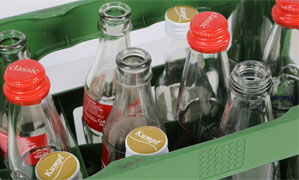 Most people of a certain age have childhood memories of returning beverage bottles to their neighborhood store and getting back their deposit coins, which were usually just enough to invest in an extra piece of candy from the same retailer.
Most people of a certain age have childhood memories of returning beverage bottles to their neighborhood store and getting back their deposit coins, which were usually just enough to invest in an extra piece of candy from the same retailer.
It’s a simple business model when viewed at the front end; but if you restrict your viewpoint of anything to only what happens in front of you, you’ll miss the sophisticated backend operations, which enable that simplicity.
Appreciating the intricacy of what makes any reverse supply chain work requires a logistics tour.
Bottle return process – a mixed crate
What separates the recirculation of beverage bottles from any other returnable asset is the sheer variety of shapes and sizes to be managed combined with the ability to do so with minimal loss and damage as the pace of business accelerates.
Let’s go back through the bottle return supply chain at the point we came in—the store.
When that retailer receives the bottles brought in by customers, it usually mixes the bottle types in crates. The business that receives these mixed crates from the retailer—whether a bottling company or a third party bottle management service provider—must be able to detect differences and sort accordingly.
Before automation, it would take 40-50 people to sort bottles by hand in some breweries. Olaf Zeiss, Linear Actuator Product Manager, Electromechanical Division – Europe
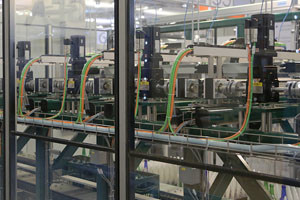 Increasingly, beverage producers are leaving the task of detecting, sorting and returning those bottles to companies that invest in automated systems and training.
Increasingly, beverage producers are leaving the task of detecting, sorting and returning those bottles to companies that invest in automated systems and training.
When a subcontractor is sorting bottles, they want to go as fast as possible because they get paid for every bottle. Zeiss
Automated bottle detection and sortation
In Fuldabrück, Germany, Vision-Tec has made a business out of providing the necessary technology to bottling service providers to help them generate a profit from the returns process.
Vision-Tec offers automated modular material handling systems for crate and bottle detection, combining flexible multi-camera capabilities with sortation. This technology uses vertical and oblique image capture as well as ultraviolet light to detect various shapes of bottles and labels. Even a bottle’s luminescence can be detected–and with ultrasound, bottle height can be checked—with or without a cap.
This is sophisticated technology, calling for machine intelligence to remove counterfeit bottles and then refill or complete those boxes with like bottles.
Sophisticated products for sophisticated technology
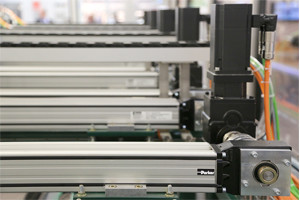 We were pleased when Vision-Tec chose to work with Parker Hannifin to supply multiple components for their automated bottle handling and sortation systems.
We were pleased when Vision-Tec chose to work with Parker Hannifin to supply multiple components for their automated bottle handling and sortation systems.
For instance, our linear actuators provide the higher velocity and acceleration required to meet the performance requirements of beverage producers and bottlers. Further, our actuators withstand the fluctuating temperatures of European summers and winters and the corrosive environments of bottling plants.
In summertime these breweries and bottlers work 24 hours a day. These are wet environments, where the equipment is cleaned regularly and the plant doors are normally open because bottles are always coming in and going out. The actuators must withstand these temperature swings. Zeiss
That ruggedness extends to the motors and gears used in Parker’s drive combinations, which offer IP65 compliance (resistance to water and dust).
Vision-Tec’s sorting robots must be equally robust—not to mention scalable and expandable. Sort stations are equipped with two grab arms each, taking the wrong bottles out of the crates as they are fed into the line, and then filling in the right ones in a continuous motion operation. By setting up intermediate storage/buffers, travel paths for the grab arms can be substantially reduced. Depending on the stage of extension, up to 1,200 boxes per hour can be sorted.
 In addition to their complex optical systems and control technology, Vision-Tec uses Parker Hannifin HPLA linear axes for controlling the mechanical longitudinal movements (in the running direction) of the sorting modules. In conjunction with intelligent Parker compax3 servo controllers with their EtherCAT communication interface, these features are designed not only to meet the requirements of beverage bottlers, but of textile engineering firms, process engineering companies, logistics service providers, warehouses and machine tool manufacturers as well.
In addition to their complex optical systems and control technology, Vision-Tec uses Parker Hannifin HPLA linear axes for controlling the mechanical longitudinal movements (in the running direction) of the sorting modules. In conjunction with intelligent Parker compax3 servo controllers with their EtherCAT communication interface, these features are designed not only to meet the requirements of beverage bottlers, but of textile engineering firms, process engineering companies, logistics service providers, warehouses and machine tool manufacturers as well.
Parker’s complete drive packages contribute significantly to the high performance and reliability of our systems. Also significant [are] their support for the sizing process and configuration process of the drive systems, and the solution’s rapid availability. Knut Oppermann, Technical Manager, Vision-Tec
Vision-Tec is planning five to ten more bottling lines by the end of the year for other beverage companies, and Parker will help it customize system requirements to those different needs.
While bottle return processing will never be as simple as the front end transaction, with these automated systems, it may seem so. Just take a look at the video.
Contributed by Rochus Bindner, Marketing Communications Manager, Electromechanical Division Europe.
